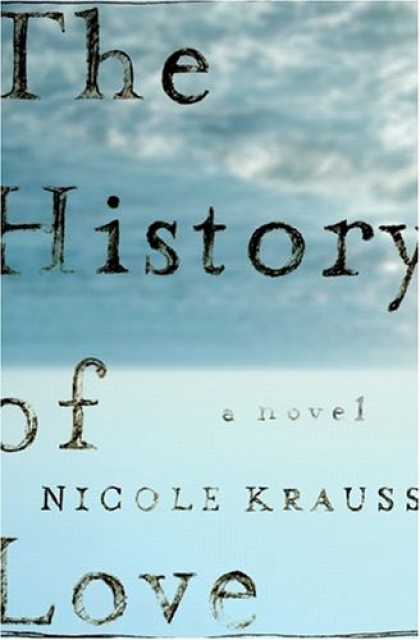Friday Spines Book Review:
The History of Love, by Nicole Krauss
Disclaimer: This book is confusing. I'm reading it for the second time and I'm still confused. I'll try my best do to a simplified plot summary, but I suggest you skip to the criticism portion of this review, as the book is complicated enough without being condensed.
The History of Love is told mostly from the perspective of both the young and old selves of Leopold Gursky; Alma, a young girl; and her brother Bird. There's some loose third person narration to fill in the gaps in the history that follows Zvi Litvinoff, Leo's former lover Alma Mereminski (a different Alma), a man named Jacob Marcus, and Bruno, Leo's friend; these aren't main characters, but are necessary to the plot.
The book entwines many stories. As a young Jewish man in Poland, Leo escapes from his home country as Germany's presence begins being felt throughout Europe. Once in America, he finds his childhood lover, Alma (Mereminski), who'd also fled to America. She has since had Leo's child--Isaac Moritz--presumed her lover dead, and married her boss's son. Leo is heartbroken.
Leo is the eventual author of three books, including one entitled The History of Love (History), which he writes for Alma (Mereminski). At one point in the story, when Leo is very sick, his friend Zvi comes to visit him. While Leo is sleeping, Zvi reads several short pieces of Leo's writing that are sitting on his desk. Zvi steals the manuscript of Leo's book History, and we spend a few paragraphs exploring his guilt over this deception. Later, we discover that a small number of copies of History were published under Zvi's name, unbeknownst to Leo.
Many years after this, Alma (not Mereminski) comes into the story. Both of her parents loved The History of Love, and the young Alma is named after Leo's lover Alma, who was written into History. Through her brother Bird and her mother's actions, Alma discovers her connection to Leo's lover with the same name, and although her namesake has recently died, the book ends with a meeting between the elderly Leo and the young Alma. (End of summary.)
My main criticism of this book is that it's very complicated. The story is beautiful and very well written, but the multitude of incredibly subtle characters and subplots scream for flow charts and family trees, and--unsurprisingly--distract from enjoyment of the language. The characters are distinct and fascinating, the excerpts of Leo's History included in the book are gorgeous, and both the imagery and the structure are excellently executed. I wouldn't classify the content as inappropriate, but wouldn't recommend the book to most readers under 17, due to the complexity of the story. It requires a great deal of concentration to read, but the exquisite beauty of the story will redeem this book for dedicated readers.
Other things I liked about this book:
- The slightly dark tone is interrupted with entertaining passages by the younger, strong-voiced Alma. She describes her brother's transformation into an extremely religious young boy, tries to find someone for her mother to remarry, and explores the impact Leo's book History has had on her life.
- Although its ambiguity frustrates me sometimes, all aspects of the ending are incredibly lovely and fit impeccably with the tone of the rest of the story
- The jumps between the beginning and the end of Leo's life are fairly well juxtaposed, and it is fascinating to see the character evolve through relationships and travels.
- Leo's friendship with Bruno, which we see in Poland, during their childhood, and after they're reunited later in life, captures the imagination. It's never revealed whether or not the older Bruno is a real person, but his fascination with Irish audiobook narrators and the motivational techniques that he uses on Leo are very amusing.
Other books you might enjoy: The Poisonwood Bible, by Barbara Kingsolver; Bel Canto, by Ann Patchett; and Cloud Atlas, by David Mitchell.
If you have any thoughts on the interpretation of The History of Love, or any other literary comments, let me know!
Happy reading--
M. Gabrielle
